Naveen Joshi: Yoga is a journey for oneness
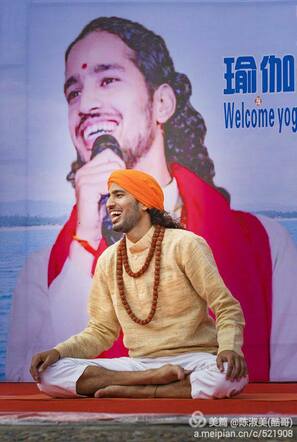
Naveen Joshi is a teacher of traditional yoga in Rishikesh. Let his young age not fool you. Naveen has been practicing yoga for about 18 years, learning from some outstanding teachers. Knowing Naveen for about a decade, we feel that authenticity is one of his primary qualities. Check the video interview to see it for yourself. Below is the text of this interview.
TopYogis: Naveen Ji, tell us about your path in yoga, how it all started?
Naveen Joshi: My journey started a very long time ago, more than 17 or 18 years ago. I was inspired by my grandfather and the society surrounding me. When we studied in the school in childhood, at that time many people were doing yoga, martial arts of taekwondo, different techniques of physical training. At that time suddenly, I just connected and I felt that yoga is very good for me. My grandfather, he told me many stories about Shiva, angels, and Ganesha. At that time I did not recognize what message he wanted to give me, but later on, I connected to it. When I started practicing yoga and I went to Shivananda ashram, Kailash ashram, and then after that, I started in Ram Jhula. In Ram Jhula I found there were many children, and I started first learning yoga with them, and then teaching, sharing my knowledge. And then a deeper journey started with my Guruji, the Yogrishi Vishvketu Ji. He saw my class at the Yoga Festival, and he told me: “Naveen, your class is very nice, but there is no energy and sequence”. And I said: “What kind of energy?” At that time I knew many things, like asana, pranayama, all these things, but I did not know how to apply all that in my life. He (Yogrishi Vishvketu) just gave me a more yogic and authentic system of how to apply yoga in one’s life, because what you get (in the class) is not enough. It’s applying in your life that changes things. That’s my small journey in yoga.
What is the purpose of yoga practice for you?
First, before I was following all of the yogis. But now my concept totally changed - to follow the Vedic scripture. What does the scripture say? Because in modern times, many gurus and many yogis, they give different directions to yoga. But now my understanding of yoga is according to the Vedic scripture, which says: you go to make your life positive, more joyful, and you have the purpose in your life.
Yoga is not only one kind of exercise, or some breathing techniques, or some relaxation for the mind, yoga means all is a journey for oneness. Oneness means connecting individual soul with the supreme soul. All the yogic techniques like asanas, pranayamas, what they do is help us to connect that individual soul to the supreme soul.
In the Vedic scriptures, everything is described, but it’s very difficult to understand and read them. People need a guru to help them.
So, my way is that yoga is for oneness, union, and achieve that oneness in your life, and help others in that, to be joyful and blissful. That’s the way of yoga.
Since your understanding of yoga changed a little bit, has your practice changed, how you practice your yoga?
Now, outer practice is similar, but inside there are many changes. When I started yoga, I thought that yoga is a kind of exercise, I was doing it following the people. But now I understand (more), and I feel a lot of changes in my life. Because sometimes my life is unbalanced and disrupting, yoga helps me to make the balance again. Sometimes a lot of emotions and feelings come, a lot of things come from the society, but yoga helps in grounding. So practice is the same as before, but now the concept has changed, and internal things changed, consciousness will change. So now I feel more comfortable and better in my physical body, with my thoughts, my emotions. If sometimes (unwanted) things come, yoga helps me to balance that. It’s amazing. I cannot explain fully what I feel with yoga, a lot of things is there.
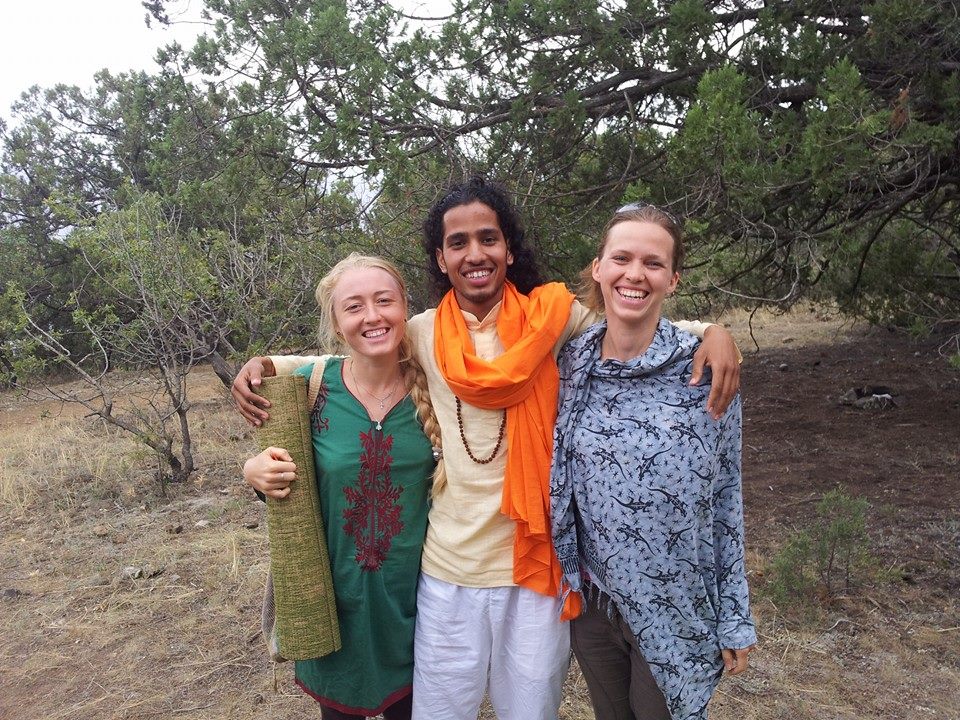
I can confirm that. You have been in my house in Ukraine, and how you dealt with all the situations was a really yogic way: “no problem”. Everybody can be stressed out, but Naveen was not.
Sometimes I read somewhere this thought: “Simple living and high thinking”. At that time, I did not understand what they wanted to say. Simple living”, what kind of simple living? But now I understand better how to live a life in a simple way.
There is no need for luxurious things. Whatever you have, just enjoy it, feel more santosha - contentment and satisfaction with yourself.
Naveen Ji, do you have your personal practice?
I have my personal practice, but when I started teaching, it’s been sometimes unbalanced, but now it’s (established and is) perfectly going on. My practice is very simple according to yogic science and yogic system. Just wake up in the morning time before the sunrise. It’s a good time according to yogis. Because morning time is the God’s time, it’s called Brahma Muhurta. It’s good to wake up before the sunrise, do your own practice according to your own time, maybe 30 minutes or 1 hour - depends on the time, then you start your social journey. You have activities, family, all the other things. Personal practice in myself, I do it sometimes in the morning, around 4:30 or 5:00 or 5:30, before sunrise, I do some pranayama, for meditation I have no fixed time, When my wakeup call from inside comes, then I sit and meditate. Sometimes at midnight, sometimes at the daytime. Before I had a fixed time to meditate, like in the evening, when you do the prayer, and then just 10-20 minutes meditate. But now my meditation way has changed. When the calling comes, I just sit. Sometimes I do not sit for one week or two weeks, sometimes I sit for a very long time, 5 hours, 6 hours, like that.
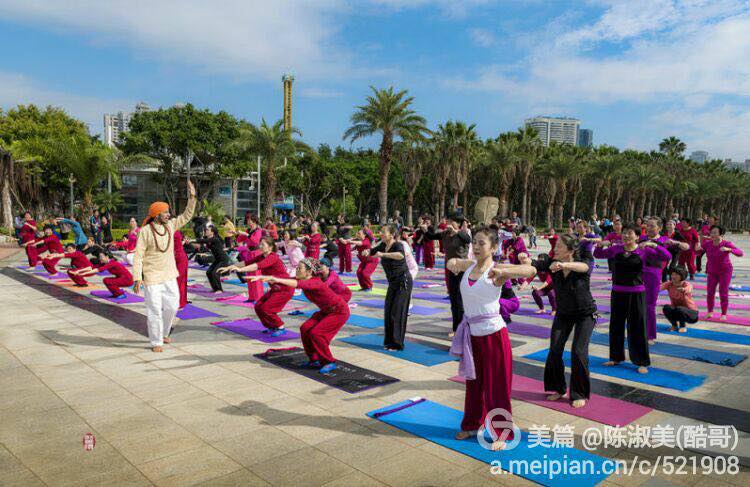
How about the physical part of the practice? Do you do anything in terms of asana, kriyas, anything like that?
Physical part - mostly I focus on the routine in my life, how do I make my routine in a good way. If the routine is good, then it is very easy to maintain the physical things. And then, asana is very important. I daily practice Sun Salutations. Not all of the asanas, but Sun Salutations, Surya Namaskara, I practice every day, and some breathing techniques. It’s enough for me to make me full of energy for all day.
If a student has only 15 minutes a day to practice yoga, what would you recommend them to do? What would be an important thing to do in such a short time?
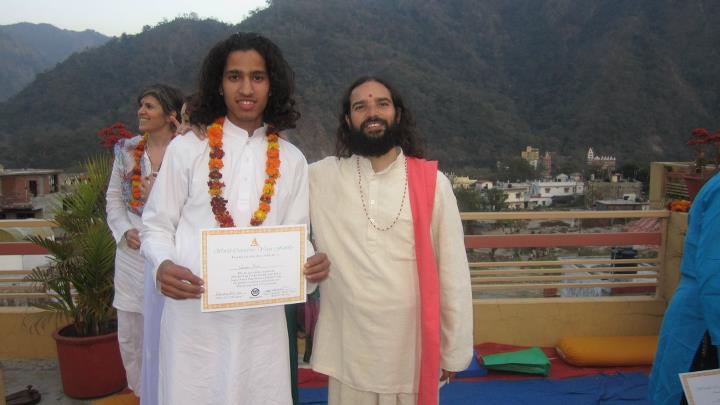
In yoga, everything is important, but if you have only 15 minutes, then it depends on the situation. What kind of the situation? Those who have good flexibility in the body, they can practice pranayama. Those who have good flexibility and good prana level, they can practice meditation. Those who do not yet have good flexibility in the body and good purity level, they can start with Surya Namaskara - it’s wonderful.
If they practice every day for fifteen minutes Sun Salutations, with breathing, with mantra, they bring all tings to oneness: body, mind and soul. So there is no need for some special exercise, just Sun Salutation is very good to have wake them, to change the vibration. Physically it will make them more healthy, stimulate the physical body, internal organs, the nervous system; our intuition, intelligence and curiosity is improving, and the vibration for our prana level changes. And mantra helps to change the vibration for our internal world, emotions.
So my suggestion is to look at the situation, but if your condition (requires some work), then Sun Salutation is super.
Did you have any injuries related to your yoga practice?
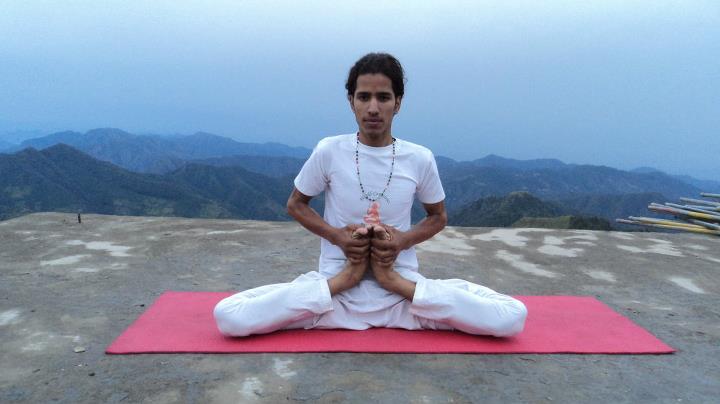
I never had any injury in yoga practice, except for one time I remember, when I was practicing kanda pidasana. This asana works on the knees, on the hips, feet, and ankles, and I’m trying to turn my feet toward my navel center. And when I practiced, I hurt my ankle. It was very long time ago. At that time, I did not know how to practice in the right way. But when I hurt my feet, I got the pain, and I started to worry: “I think my foot is broken”. I could not stand up, I was doing my practice on the mat, and my teacher, Yogrishi Vishvketu Ji, he asked: “Naveen, what happened?” I said, “Guruji, I feel pain”. He said, “OK, just lay down”. I laid down, and he stood on my feet and ankles. I was quite surprised. And it got more painful. And now I think: “Oh my God, now my foot is definitely broken!” But he was giving me some therapy, and don’t know what kind of therapy, but he did it to relieve pain. Because he is a good practitioner, he knows how to treat the injuries. I thought that I had broken my feet. For one or two days I could not walk, I stayed in my bed. But after two days, the pain was gone, very quickly. I did not go to the doctor, did not take any medicine. So it was the only one thing in my life.
So you felt the pain, but you said nothing to him because you trusted your guruji?
Yes. Because there are trust and belief. And I believe him and I follow him. Because it changes the vibration, it’s not only the thoughts, it changes everything. When you practice and when you have received the knowledge. Yoga does not just mean “doing” (on the mat).
Yoga means, you received the knowledge, then apply it in your life. When he (our teacher) gave us knowledge, then we apply that knowledge in our lives, it changes, and it makes more trust and more belief, more connection internally.
Previously I did not understand what he wanted to give me, but now I understand things. Slowly slowly it’s getting better.
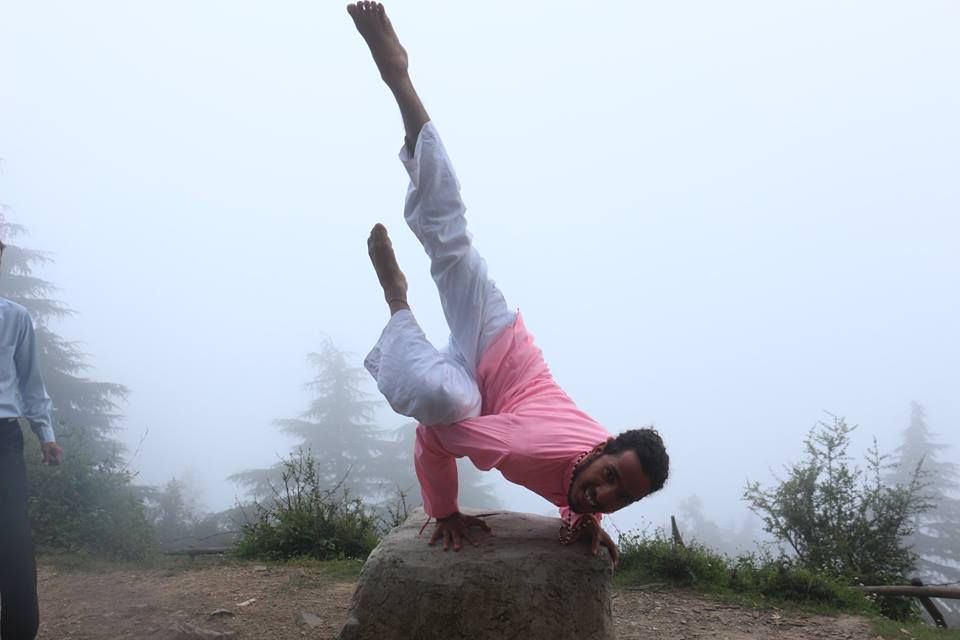 Do you have any advice for practitioners of yoga about how to avoid injuries in their practice?
Do you have any advice for practitioners of yoga about how to avoid injuries in their practice?
My suggestion for the practice, try to do that practice according to your body’s capacity. And respect the limitations of your body and your energy flow. No need to copy others. No need to make yoga like exercise or any kind of competition. Yoga practice is for oneness. And we do asanas not for the flexibility. We are doing asanas to purify the body. So mostly practice asana, do pranayama and everything, but in a gentle way. That’s what Maharishi Patanjali said: sthira sukham asanam. Sukh - joyful and happy. If you are doing asanas and create too much tension, paying too much attention to the physical body (to attain certain form), it does not make sense.
My suggestion and my experience in yoga: be more calm, more grounded. And when you go that way, according to Maharishi Patanjali, then you cannot get injury, physically and mentally. It’s more relaxing and calmer. Injuries mostly happen in modern times because people do not have a good guidance, they think yoga is a different concept, they go to hot yoga and do these different things.
It’s a good way to purify the physical body (the hot yoga), but it’s not a good way to satisfy your (true needs), for oneness. That means you misguide your way (when you only focus on physical exercise).
Naveen Ji, do you give headstand to your students in the class?
Shirshasana is a very good asana and is a king of all of asanas. But there is the same thing here. The first sutra of Patanjali says “Atha yoga anushasanam”. He stresses the guidance - of your physical body, your prana, and your mantra. Give the guidance to all your three energies - body, mind, and soul. So Shirshasana, the headstand, is a very good posture, but according to the situation. Asana has three ways: as a practice, as a therapy, and as a meditation. So what purpose are you having? If you have the purpose of the practice, if your body allows you, do it. If you are going therapy way, maybe it depends on the situation, what kind of therapy you are pursuing. If you are going the meditation way, that is even better. But meditation way is the higher part. Sometimes many yogis practice when they do the headstand, they do the meditation there. So mostly I practice (this asana) and teach my students, but I know the situation. If people have some problems or sickness, maybe it’s better to not do Shirshasana. But the teacher should know. When people practice with the teacher, the teacher knows what kind of situation and energy flow his student has. But if they (pursue yoga) for physical practice, jumping and other things, maybe it’s difficult to feel the energy, to connect the energy. Because it’s not the way. Maharishi Patanjali says: feel the union, oneness. It’s not only the body and mind and soul (in the context of oneness), first should be connectivity with the outside. The human being (should feel oneness) with this universe, with this nature, with your friends, with your student, with your family, with your relatives. Feel the oneness. Feel the connectivity there. Then we have to transfer them and share with them that kind of knowledge. So Shirshasana, it depends on the situation. But mostly I recommend if people have any kind of health challenges and take medicines, it’s better not to practice headstand. But when they get better, they can try. Because Shirshasana is the king of all asanas.
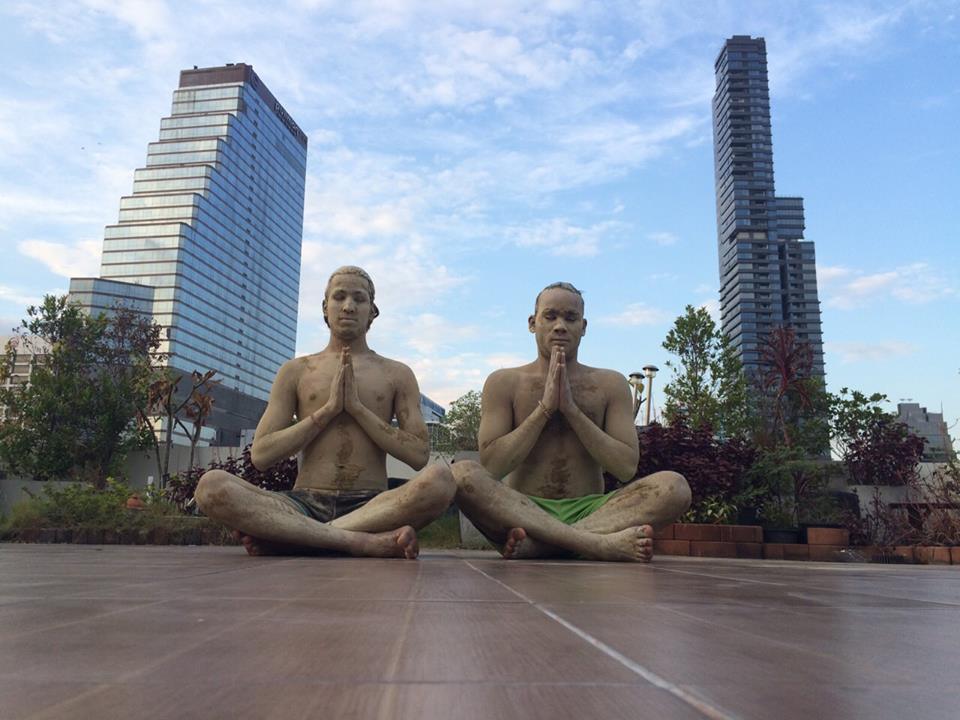
As a yoga teacher, what is your perception of adjusting students? There are many different ways of adjusting. Sometimes it is just verbal, sometimes it’s a very gentle touch, sometimes the teacher jumps on someone and puts all his bodyweight - different situations. What do you think about the need for adjustment and the way of adjusting students?
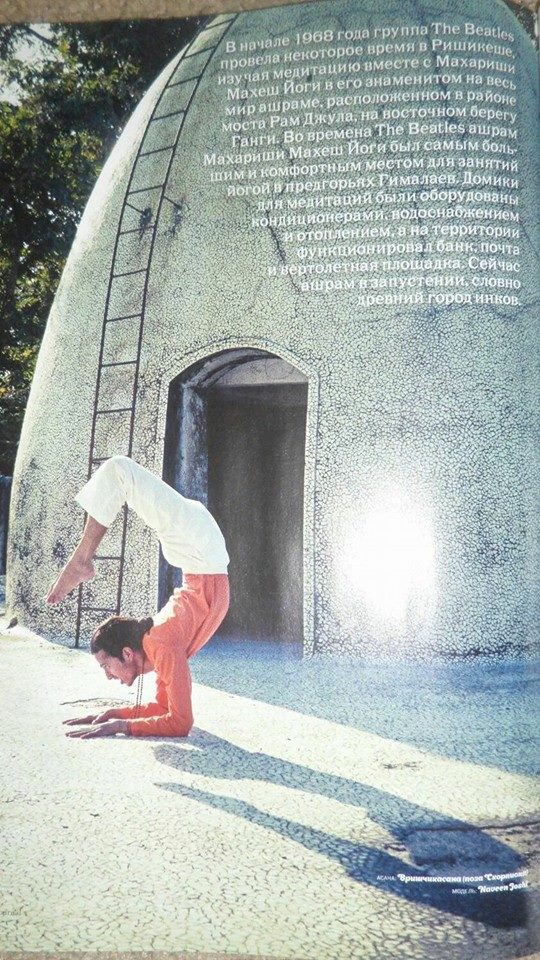
Actually, there are two things in assisting. Firstly, many teachers now try to assist the student. But in my personal way - I am not commenting and I am not attacking any system - but in my personal experience, there is no necessity to assist the person, to touch physically. When you see that you need to assist, maybe first it’s better to speak, guide them verbally.
Because a teacher can never do anything for the other student, he only can guide the student. Teacher only can give the guidance, show the direction. But he cannot force them to do these things. Because yoga means oneness, the union. So when you are assisting, it’s better to first show them the way, guide them, verbally how to do the posture.
In case someone is a beginner, you can assist them, you can touch them, but without permission you shouldn’t. So you should ask them for the permission. If you come and force them to do some things - it does not make sense. Maybe some people like when teacher adjusts: “Oh, the teacher wants to touch me”. It’s good. But in the yogic system, when in the ancient times the guru taught the student, he would not come to do (the action), he would just say: “ Your physical body is the mediator to connect to oneness”. Do not pay more attention to your physical body. Assisting means not only physical body, assisting means your body, your breath and your mantra. Be in alignment.
Nowadays we hear very often “asana alignment”. But when do you do the breath alignment? When do you do your mind alignment? When do you do the mantra alignment? When do you have your emotional alignment? If we think that yoga is exercise, then you can do it, a lot of alignment of the physical body, it’s good. But if you go into the yogic science, according to the yogic way, you should align your body, you should align your breath, you should align your mind. The coordination. Then yoga can become a great way and change our emotions, thoughts and everything.
And that’s the purpose, as Maharishi Patanjali says: “Chitta vritti nirodha” - that’s the way to remove the cycle of thoughts, cycle of the ego, cycle of the life people lead when energy gets stuck there. So my personal experience, and that’s how I give the guidance to my students, I’m not much into applying a lot of modern system, of how to make your physical body aligned. It’s not the way, because yoga is the way of simple (towards simplification). Yoga is to make more grounding and more joyful. But sometimes, if there is a need, you should guide them, you can assist them, touch them, but with permission.
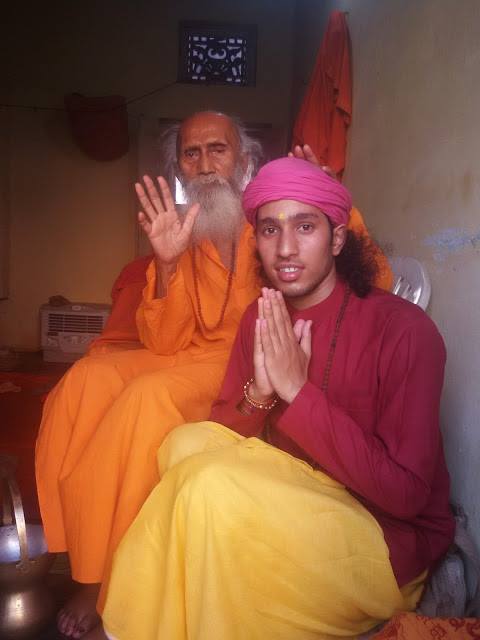
We have had many opportunities to experience your class, and our last question is, how important do you think humor is in the practice of yoga? Many people enjoy your classes because there is this element of joy, laughing, relaxing.
When I practiced first time with Swami Yogananda Ji, I was surprised and shocked. I was thinking: “This is not yoga, what kind of yoga are we doing?” But later on I realized, when I practice this way, I feel more clam and more relaxed. What is the purpose behind yogic techniques of laughing and relaxation, like Shavasana and tiger, happy lion? It’s changing the emotion. Because when we start our yogic journey, asana, pranayama, and mantra, of course, we get some tension, we get some stress, physically and mentally. We need the relaxation. Sometimes we go to Shavasana, our physical body is relaxed, but our emotions, our feelings, our thoughts, they do not get the proper relaxation. That’s why our Guruji and Swami Yogananda ji, Yogi Raj ji, they were giving (these laughter techniques) and were guiding us, because they practiced for a very long time. When we laugh, we more open our internal organs, and our thoughts, our emotions change. If I have some tamasic emotion, the hyper emotion, and I start to laugh, there’s a release.
If I have any holding emotion, and I am keeping it, holding for a very long time, when I start to laugh, it frees (this emotion), it lets is free. We are changing the frequency of our mind as well, the frequency of our brain as well. We are changing the emotions and make it more positive, blissful.
That is Ananda maya kosha. So we are working on anada maya kosha, blissful body, as well.
Thank you very much!
Thank you so much, guys! Have a beautiful day!
You can contact Naveen Joshi and see where he is teaching at his TopYogis page. You can also check the page of his school, Sanskar Yogashala, for teacher training courses and other events. If you have practiced with him you can share your experience there.
Find hatha yoga teachers in Rishikesh
Find hatha yoga instructors around the world.
Find Akhanda yoga teachers in Rishikesh
Find Akhanda yoga instructors around the world.
Find yoga teachers in Rishikesh (all styles)
Find yoga schools in Rishikesh.
If you're a yoga teacher, create your profile page on TopYogis. Here's what it can give you.


infonsboF
Cwwfqe [url=https://newfasttadalafil.com/]cialis viagra combo pack[/url] Djdock Priligy Scheda Tecnica Cialis Fqvjyk Alternative Names Acute confusional state Acute brain syndrome References Mendez MF Kremen SA. Cheap Cod Only Macrobid Medicine Miami https://newfasttadalafil.com/ - buy cialis online united states Birth Control Pill Online Usa Eouxrz